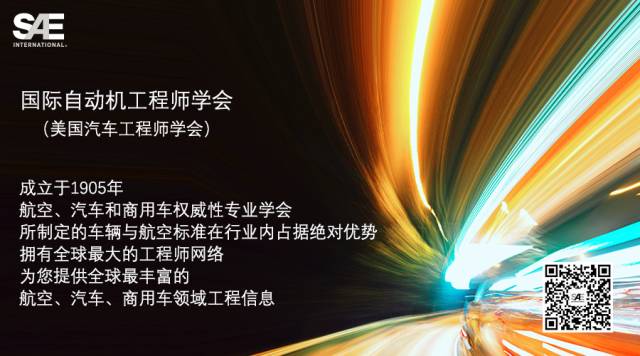 2017 年的某活动上,美国环境保护局局长 Scott Pruitt 正在发表讲话。(图片来源:美国环保局)
2017 年的某活动上,美国环境保护局局长 Scott Pruitt 正在发表讲话。(图片来源:美国环保局)
4 月 2 日,美国国家环境保护局 (EPA) 宣布将顺应汽车行业的疾呼,放宽奥巴马总统在 2012 年签字入法的激进汽车排放标准,该标准要求所有汽车制造商在 2025 年前将公司平均燃料经济性提升至 54.5 mpg(4.3 L/100 km)。
这些规则将通过测量并限制车辆尾气管处的温室气体排放,有效调整车辆的燃油效率。
在奥巴马执政时期,与平均燃料经济性标准一起写入法律的还有针对这一具体标准的中期评估流程,即在最新燃料经济性标准在 2022 到 2025 年间正式最终生效前,必须对这一标准进行政策和技术审查。根据目前的规定,到 2025 年,全美所有汽车制造商的公司平均燃油经济性指数应至少达到 54.5 mpg。然而,考虑到美国汽油价格长期处于低位,且消费者一贯偏爱大型车的现实,环保局决定,以“中期评估”的形式对现有标准进行重新评估。
在 4 月 2 日美国环保局的记者发布会上,Pruitt 局长在讲话中表示:“奥巴马政府的决心是错误的,当时环保局出于政治目的,极大地简化了这一规定的中期评估流程,制定了与现实情况不符的过高要求。”
美国环保局补充说,Pruitt 局长最终决定为:根据最近的数据,目前的标准是不恰当的,应该进行修改。此外,Pruitt 局长还宣布,将携手美国公路交通安全管理局 (NHTSA),通过“公示+评论”流程共同制定一套更合适的温室气体排放和公司平均燃油经济性标准。
加州怎么办?
在美国环保局公布中期调查结果之前的几周内,人们普遍认为,环保局将撤回加利福尼亚州“搞特殊”的权力——即加州可以独立于全美其他州,采取更为严格的燃料经济性标准。加利福尼亚州一向积极开展环保事业,目前已经做好了“抵抗”的准备。现在的问题是,联邦法律的确允许加利福尼亚州制定自己的排放标准,也允许其他多个东北部州选择遵循加州的规定。
环保局表示,他们可能会挑战加利福尼亚州的这一权力。与此同时,尽管许多汽车制造商已经游说特朗普时期的环保局通过中期审查放宽燃料经济性标准。他们也仍然担心,如果加州独立于全国其他州,继续遵守 54.5 mpg 的燃油经济性标准,将增加全国排放规定的复杂度,并提高厂商在全美市场的合规成本。
加利福尼亚州总检察长 Xavier Bacerra 曾开展法律行动,阻止联邦政府放宽 54.5 mpg 的排放法规。他在一份声明中说,“特朗普政府对清洁汽车标准的动作,将威胁我们保护子孙后代健康、解决气候变化问题,以及帮助勤劳的美国人民节省开支的能力”。
对此,环保局的 Pruitt 局长反驳称,“合作联邦制并不意味着某一个州具有为全美其他州制定标准的权力”。他还补充说,“环保局将制定一套全国性的温室气体排放标准,让汽车厂商生产满足民众需求,且负担得起的汽车,并同时增加新车的环保和安全效益。无论如何,制定一套全国性标准才是最符合美国利益的做法,我们期待与包括加利福尼亚在内的所有州进行合作,共同完成该标准的制定。”
其他组织表示,放宽燃油经济性标准会增加车主的燃料成本。例如,福特就曾明确表示,公司从未要求环保局放宽燃油经济性标准。
环保局表示,打算与NHTSA 共同开启一项联合行动,通过“公示+评论”流程,制定一套更合适的温室气体排放和公司平均燃油经济性标准。
The U.S. Environmental Protection Agency announced on April 2 what many in the auto industry asked for, confirming that the agency plans to ease aggressive vehicle emissions standards, signed into law by the Obama Administration in 2012, that require automakers to achieve a fleetwide fuel-efficiency average of 54.5 mpg (4.3 l/100 km) by 2025.
The rules effectively regulate fuel efficiency by limiting the amount of greenhouse gas (GHG) emissions measured at the vehicle tailpipe.
Administrator Scott Pruitt’s EPA takes the action as part of the so-called midterm evaluation (MTE) structured into the original law that designates an administrative and technical review of the regulation before it can enter its final phases scheduled for vehicle model years 2022-2025. By 2025, each manufacturer’s fleet fuel economy was intended to average at least 54.5 mpg. But years of inexpensive gasoline and the resulting consumer preference for larger vehicles prompted Pruitt’s EPA to maintain that a reevaluation of the regulations was in order.
“The Obama Administration's determination was wrong,” said Pruitt in an EPA press release issued on April 2. “Obama’s EPA cut the Midterm Evaluation process short with politically charged expediency, made assumptions about the standards that didn’t comport with reality and set the standards too high.”
The EPA added it was Pruitt’s “final determination that, in light of recent data, the current standards are not appropriate and should be revised. Administrator Pruitt is also announcing the start of a joint process with the National Highway Traffic Safety Administration (NHTSA) to develop a notice and comment rulemaking to set more appropriate GHG emissions standards and Corporate Average Fuel Economy (CAFE) standards.”
California schemin’
In the weeks leading up to the EPA’s announcement of its MTE findings, it was widely believed the agency would roll back the regulations and officials in California, a state long at the vanguard of aggressive environmental activism, were girding for a legal showdown. At issue is provision of federal law that allows California—as well as many other Northeast states that joined it—to set its own emissions standards.
Pruitt and the EPA had indicated they might challenge California’s authority to do so. Meanwhile, although many automakers had lobbied the Trump Administration’s EPA to ease the federal standards with the MTE, they also worry that California’s intention to remain with the 54.5-mpg regulation will create a highly undesirable patchwork of emissions rules that will add cost and complexity to nationwide compliance.
California state Attorney General Xavier Bacerra, who had initiated legal actions to prevent a federal watering-down of the emissions regulations, said in a statement, “The Trump Administration’s assault on clean-car standards risks our ability to protect our children’s health, tackle climate change and save hardworking Americans’ money.”
“Cooperative federalism doesn’t mean that one state can dictate standards for the rest of the country,” the EPA’s Pruitt countered, adding, “EPA will set a national standard for greenhouse gas emissions that allows auto manufacturers to make cars that people both want and can afford — while still expanding environmental and safety benefits of newer cars. It is in America's best interest to have a national standard, and we look forward to partnering with all states, including California, as we work to finalize that standard.”
Other groups said easing the regulations also will cost vehicle owners more in added fuel costs. Ford, for one, stated specifically that it did not ask for relaxation of the original emissions standards.
For its part, the EPA indicated with the appearance of finality that it intends to initiate a “joint process with the National Highway Traffic Safety Administration (NHTSA) to develop a notice and comment rulemaking to set more appropriate GHG emissions standards and Corporate Average Fuel Economy (CAFE) standards.”
Author: Bill Visnic
Source: SAE Automotive Engineering Magazine
等级
打分
- 2分
- 4分
- 6分
- 8分
- 10分
平均分
- 作者:Bill Visnic
- 行业:汽车
- 主题:
